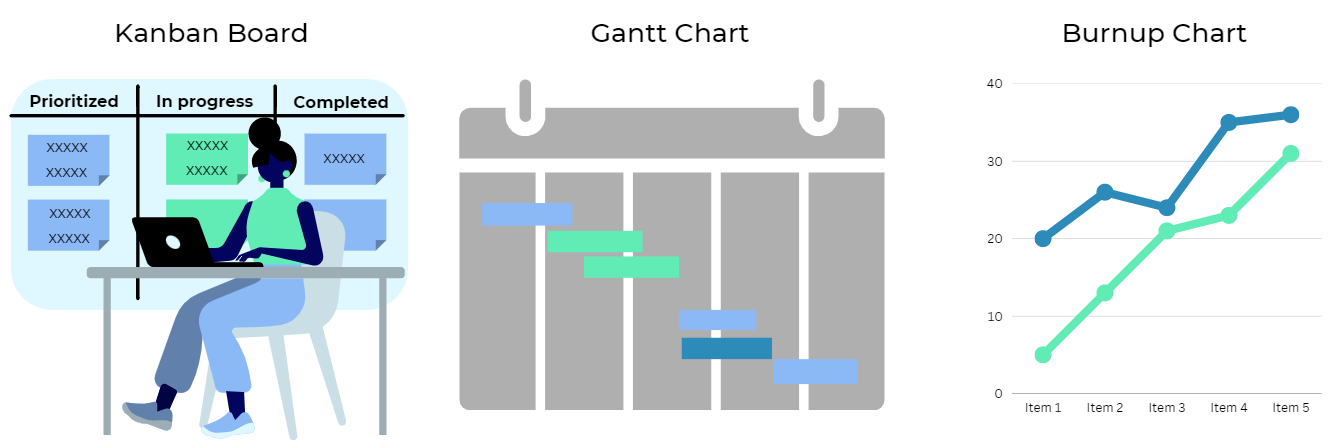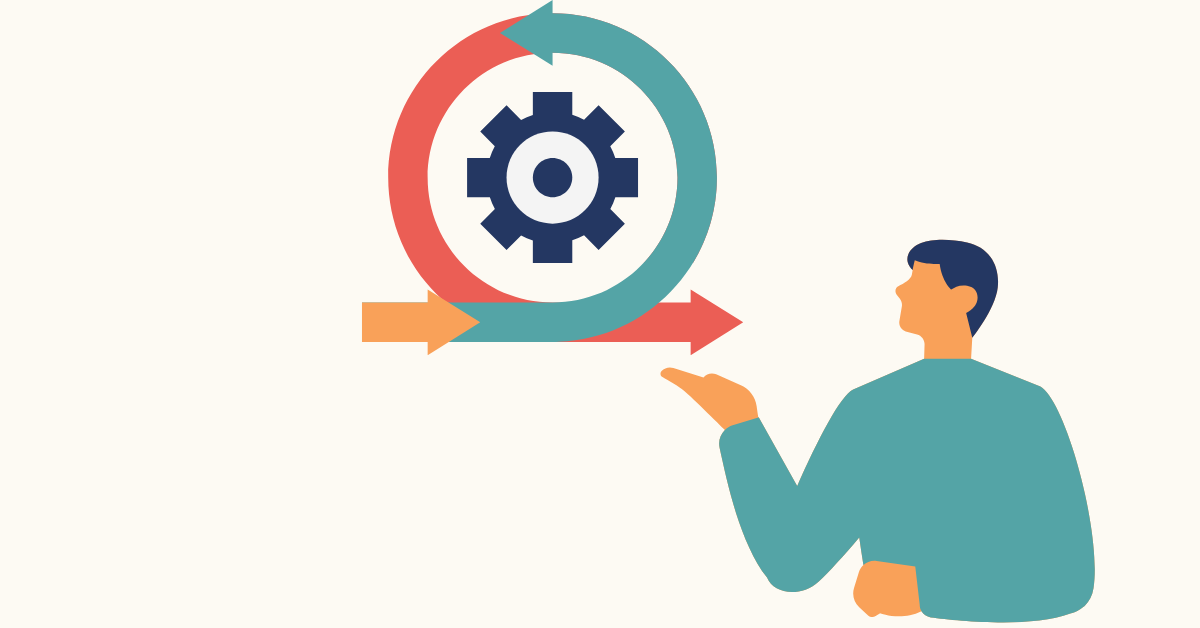Introduction to Agile Project: Why Do We Use It?
[starbox]
As a Senior Project Manager, I’ve experienced different working methods, and Agile Project Management has become a true passion. Studying Agile Project Management solidified that for me, and seeing how practical this methodology is in the software industry it’s easy to see why this is becoming increasingly popular.
I will run through some core concepts of Agile Project Management and explain why choosing this approach might be right (or wrong) for your project and field of work.
You might also be interested in: Types of Project Management Frameworks: Top 20 Popular Methods to Consider for Your Business
My Bottom Line Up Front
The fundamental principles of Agile Project Management focus on delivering the best software on time, every time. Agile PM seeks to provide quality by incorporating incremental delivery of working software as quickly as possible.
Business needs, quality, collaboration, and deadlines are hugely important. Regardless of your current industry or framework, you can use the fundamental principles of Agile Project Management effectively in managing projects across any industry.
What is Agile Project Management, and Why Would I Choose This to Manage Projects?

Agile Project Management is an iterative approach whereby recurrent and continuous releases incorporate feedback. It prioritizes the involvement of stakeholders, constantly working towards improving the product and processes. Managing projects with this approach means delivering well-designed and thoroughly tested products that meet the customer’s needs.
Agile Project Management was created in 2001 by a group of 17 developers who formed the Agile Manifesto, which encapsulated the principles and philosophy of this approach. The Dynamic Systems Development Method or “DSDM” is a framework for Agile Project Management and is now known as the Agile Business Consortium.
The DSDM was established in 1994 and helped shape Agile specifically for the delivery of projects. Agile at the time, was a new, flexible way of counteracting traditional project management’s slow and laborious methods and the rushed approach of Rapid Application Development (or RAD). As software became increasingly popular, many startups required a faster product delivery solution.
You can think of the Agile Manifesto when considering how traditional and Agile approaches differ:
- Individuals and interactions over processes and tools
- Working software over comprehensive documentation
- Customer collaboration over contract negotiation
- Responding to change over following a plan
Yes, we value BOTH of these concepts, we just value those on the left-hand side more.
The DSDM is based on a philosophy that I live by. When your projects and teams are aligned to this philosophy, it’s easy to start out and end off with successful project implementation.

In contrast, the more traditional approach, such as the “Waterfall” methodology, focuses on running through a project sequentially from requirements through to development, testing, and deployment as a linear process from beginning to end.
As a result, comprehensive requirements are gathered at the beginning stages instead of allowing these to become more established over time. As a result, issues can cause delays where the entire SDLC (Software Development Lifecycle) process has to start again.
You can see how this can be counterproductive when considering software and product-based development and deliverables. Conversely, Agile project management focuses on gathering a very high-level baseline of requirements, confirming viability, and then moving into what we refer to as “iterative development.”
Software development focuses on smaller outputs in multiple stages (called increments). The deliverable (it could be a product or enhancement, for example) is deployed in a smaller time frame. If issues or changes arise, the team can incorporate these changes without the project deadline being at risk.
All these points may help you see why I love the “agility” and adaptability of Agile! What’s great about the Agile methodology is that it is intuitive, and you don’t need hundreds of hours of project experience for this to make sense.
It might look something like this as a quick comparison:

Pros and Cons of Agile Project Management
Pros
- No delays in project kickoff, as the requirements needed at the outset, are very high-level and can develop over time.
- There is a far greater focus on collaboration and communication across teams.
- A quicker response to changing requirements is beneficial to deliver a solution that meets the business’s needs. This results in higher customer satisfaction.
Cons
- Although I genuinely enjoy working in an Agile way, sometimes requirements can be “too high level,” and project details excluded. This sometimes results in project scope creep, budget forecasting or quotation inaccuracies, and delayed start times.
- Sometimes, the ineffective application of Agile can result in a fractured delivery where some core steps are missed, leading to a messy project rollout.
Using Agile to Deliver Quality Projects on Time
Now that we understand the Agile approach, it’s essential to know how we use this effectively. We need to know what roles are important and what tools these individuals use to ensure the project can roll out seamlessly.
Whether you’re a project coordinator or project manager, the approach is still the same.
Agile Project Roles – At a Glance

In Agile Project Management, teams should ideally be between seven and ten members. The team usually comprises the scrum master(where scrums are applicable), product owner, and development team members. These individuals should be cross-functional but able to work independently as experts within their focus areas.
The Agile project team may have several supporting members that may play a part in the project where necessary. However, the Project Manager is the center of the project-level team and ensures all aspects of the project run smoothly.
As a project manager working within an Agile Project framework, your role is facilitative. Still, it involves the delivery of both the technical and business sides of the project from the feasibility phase to the deployment phase.
The key is that the individuals should have ownership and be motivated; this usually leads to happier and more collaborative teams.
PM Tips: In Agile Project Management, think about placing yourself at the center of the team you’re managing and overseeing all the aspects of the project. Your role is to ensure a seamless project rollout end to end.
Tools and Processes for Agile Project Management
The tools, practices, and products used will differ in every environment you work for, so I won’t go into granular detail. However, a great Agile Project Manager is one who can deliver clear status updates to stakeholders at any time.
In addition, you will want to use a project schedule in a way that all team members can access and view so that the status of all projects can be readily available. Scrum and Sprints are synonymous with the Agile Project workflow, and you may have heard these terms before.
Agile Using Sprints
A sprint consists of repeatable iterations, including daily meetings to ensure the project is on track. They typically conduct these meetings while standing up, hence the term “stand-up” meetings (or, in some organizations, a daily scrum).
Requirements form part of a backlog where the planning process is kicked off, and deliverables are prioritized into the schedule. Team capacity and task priority are essential when allocating what can be allowed in the time frame for the sprint.
Most sprints are between one and four weeks long depending on the product or deliverable, with multiple increments forming the sprint.

Once deliverables are scheduled into the sprint, they can be developed, tested, and reviewed and then deployed if they’re successful or allocated back into an increment if they require further amendments. The daily scrum or standup is a way to include the team in this feedback and maintain transparency between stakeholders and development teams.
Stand-up vs Scrum
The main difference between standup and scrum is that the development team does not need a team leader or stakeholder to be present in the scrum. The developers will discuss what was accomplished the day before, identify blockers, and what they will do for the day.
Tracking Projects and Feedback:
Teams generally use a whiteboard or digital whiteboard/platform to track updates and project progress during the team meeting to discuss the items allocated for the day.
Many online tools like Kanban boards are easy to use and have drag-and-drop features and automated functionalities. Agile teams can also make use of Gantt Charts or Burnup / Burndown charts for tracking progress against deadlines at a very high level.

PM Tips
You can find many digital project tools that can fulfill this required functionality. Each organization you work for should have something similar in place.
My Personal Favorites
- Atlassian Jira – it’s a great tool for software development projects. It’s not pretty, but it’s really functional and configurable.
- ClickUp – This is great for teams that prefer to use templates and want something with a number of built-in functionalities. I love their time-tracking widgets and preset automation for sprint rollovers.
Agile Project Management Certifications

You might be considering furthering your skill set in Agile Methodology, and many courses and certifications serve this purpose.
They are optional, but many potential employers are starting to include these certification requirements in job postings. When my Project Team recruits top talent, we consider those who have invested in their skillset by taking the initiative to become a specialist in their chosen field.
Based on Global Popularity and Relevance, My Top Picks for Agile Certifications are Listed Below:
1. International AgilePM® Certifications – Administered by APMG.
I may be biased as I have completed my AgilePM® certification, but this has dramatically improved my working method with various teams, clients, and internal process optimization initiatives. There are two certification levels, namely the AgilePM® Foundation and AgilePM® Practitioner.
The course content is practical and straightforward, and you can see the benefits of applying these fundamental methodologies to multiple teams and projects. In addition, the course covers a comprehensive understanding of the history of Agile, project roles, tools, products, and how to implement these successfully.
The Practitioner Level certification delves into applying all the principles set out in the Foundation course. AgilePM® is aimed at current project managers, but it can also help those just starting their career in project management to gain a broad understanding of the Agile project space.
There are no prerequisites for eligibility for registration of the AgilePM® Foundation Certification. However, once you have passed the Foundation course examination, you can register for the Practitioner course and exam.
2. PMI-Agile Certified Practitioner (PMI-ACP) – Offered by the Project Management Institute (PMI).
This course provides an in-depth understanding of the Agile manifesto and principles and a broad overview of Agile concepts. The certification also gives insight into different lean, scrum, and kanban methodologies. Keep in mind that there are prerequisites to being accepted to register.
3. The Scrum Alliance administers Certified ScrumMaster (CSM).
Scrum certifications are becoming an increasingly popular methodology within Agile. Scrum is more practical for individuals working within a Scrum-based software development environment. There are many different Scrum Certifications, but starting with CSM is a great way to become more familiar with this methodology.
4. Leading SAFe® and other SAFe certifications.
SAFe stands for Scaled Agile Frameworks and is a great way to build up your knowledge around implementing, managing, and running projects in an Agile way. Scaled Agile offers multiple SAFe certifications.
However, I recommend starting with Leading SAFe®, as this gives a great introduction to the foundations of SAFe and how the methodologies can help you and your organization. There are registration prerequisites, such as having either Software Development and Testing experience or experience in Agile Project Management.
5. PRINCE2® Agile Foundation and Practitioner
PRINCE2® is more recognized in the UK, Europe, and Australia. However, this certification is gaining popularity as it’s recognized internationally.
“PRINCE” is an abbreviation for Projects in Controlled Environments. It is designed to work alongside existing Agile methodologies and projects and can be a great addition to your CV.
PRINCE2® Agile is an excellent certification if you’re looking for something that covers a broad overview of Project Management within an Agile framework and does not require any prerequisites other than attending the training before the exam.
FAQs about Agile Project Management
Answer: Some organizations prefer one way of working. Waterfall may be better suited to projects where highly complex and formal project requirements are needed. Agile is better suited for those requirements where the teams may be smaller and have shorter time constraints. Understanding both is valuable so you can apply a hybrid approach.
Answer: No, in fact, it has been called “Mature Agile” as it has been used since 1994 as a practical approach for non-IT projects. It tends to be more prevalent in the software industry due to the fast-paced nature of this industry.
Answer: First, decide how and where you will use your certification. The company you work for might have a preference for the type of Agile Certifications they see value in. You also need to check whether you meet the requirements for eligibility for registration. For example, some certifications may require a set number of project management hours or a university degree to qualify for acceptance.
Answer: While the output is ideally the same, scrum requires the team members to be independent, whereas a stand-up usually has a team leader guiding the meeting. In both instances, it should take no more than fifteen minutes to ensure that the team can continue their allocated work for the day.
Conclusion
Agile Project Management is becoming increasingly popular, and it’s a great way to manage projects flexibly across diverse industries.
Although Agile Project Management is best suited for software, you can use this adaptable approach’s core fundamentals to manage projects in almost any industry.
Moreover, by growing your skills and certifications in Agile Project Management, you can also position yourself as a sought-after candidate among your peers!

Tarryn Menzies is a seasoned Senior Project Manager, Agile enthusiast, and the insightful voice behind her expert pieces on Projects Pivot. With a career rooted in hybrid Agile environments, including Scrum, Kanban, and MoSCoW methodologies, her passion for project management is palpable in every article she authors. A certified AgilePM via APMG, Tarryn is well-equipped to delve into the intricacies of project management, leading readers through complex concepts with ease and clarity.
In her current role as an IT Operations & Project Manager, Tarryn consistently achieves a balance of technical proficiency and strategic thinking, making her uniquely suited to interpret the often-intertwined worlds of IT and project management. Her extensive skillset includes Waterfall Project Management, PRINCE2, and Service Delivery, among other things, demonstrating her versatility as a management professional.
Known for her clear communication and problem-solving abilities, Tarryn has a knack for managing stakeholders effectively, steering complex projects towards successful completion. With proficiency in Project Management Software, Jira, and XML, she navigates the digital landscape of project management with ease. Moreover, her familiarity with SaaS and Business Analysis empowers her to engage with the evolving needs of modern project management and she shares all her real-world insights here at Projects Pivot!

